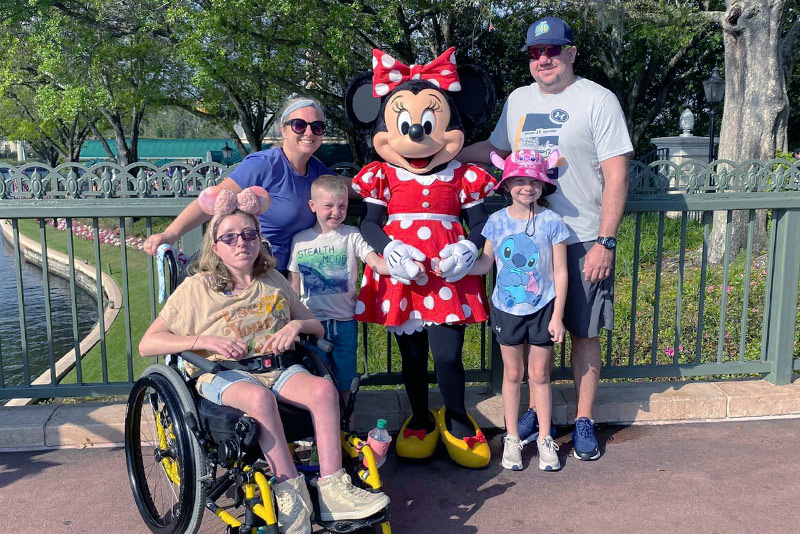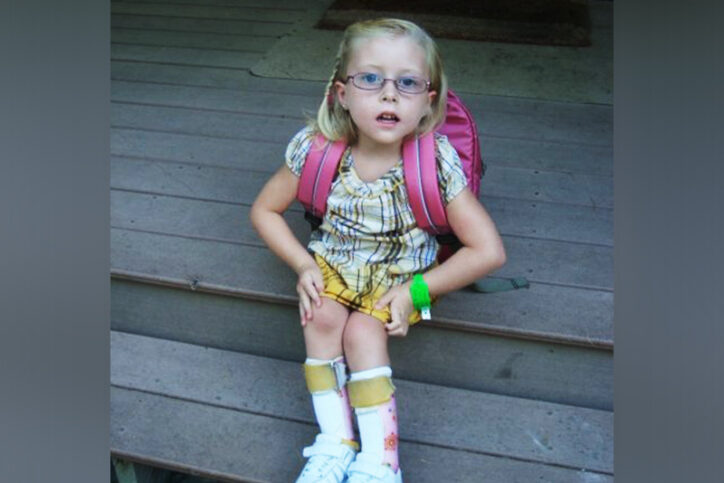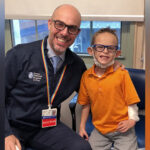On her own terms: Robot-assisted procedure gives Sage more independence

At 19, Sage Nault has had multiple surgeries, aimed at addressing challenges related to myelomeningocele, the most severe form of spina bifida. But it’s her most recent operation that might have the greatest impact on her quality of life. Known as a Mitrofanoff appendicovesicostomy and a Malone antegrade continence enema (MACE), the combined procedure has given her a sense of freedom and independence she and her family weren’t sure was possible.
“It’s made a huge difference,” says her mother, Lisa, “not just for Sage but for all of us.”

A second opinion and surgeries
For years, Sage received care at her local children’s hospital in Rhode Island. “I was a young mom and didn’t know all of my options then,” says Lisa. By the time Sage turned 13, Lisa learned that Sage would need spinal surgery to correct scoliosis. She reached out to Boston Children’s Hospital for a second opinion.
Once at Boston Children’s, Lisa discovered that scoliosis wasn’t Sage’s most urgent concern. Born with hydrocephalus, a build-up of cerebrospinal fluid in or around the brain, she was experiencing a malfunction of the shunt that helped drain that fluid. Over the next few years, Sage underwent several surgeries with Dr. Benjamin Warf to replace the shunt and address other issues, including a buildup of fluid in her spinal cord that had affected her left hand.
Through it all, Sage and her mom developed lasting relationships with Dr. Warf, Dr. Carlos Estrada, and the rest of the team in the Spina Bifida and Spinal Cord Conditions Center. “They made us feel so comfortable,” says Lisa. “We really felt like they were part of our family.”
A minimally invasive option
Those surgeries were necessary, but they meant that Sage would have to wait a while for the Mitrofanoff appendicovesicostomy and MACE. By last year, she and her family were more than ready.
Like many people with myelomeningocele, Sage has neurogenic bladder and bowel and can’t fully eliminate without using a catheter or enema — something she couldn’t do herself. For years, she had to rely on Lisa to catheterize her, whether at home or in public. “Sometimes, I’d have to place her on a dirty restroom floor to cath her,” remembers Lisa. “If there was no public restroom, we’d have to do it in the car.”
That finally changed in August 2022 when surgeons Dr. Hatim Thaker and Dr. Belinda Dickie performed the Mitrofanoff appendicovesicostomy and MACE respectively. Assisted by robotic “arms,” they were able to make tiny incisions in Sage’s navel and abdomen, resulting in a minimally invasive procedure that left scars so small that Sage can confidently wear a bikini.

Newfound confidence
Even better, Sage can now control elimination on her own. After a bit of a learning curve — which Dr. Thaker and nurse practitioner Rebecca Sherlock helped troubleshoot over video — she’s able to insert a catheter through the incision near her bellybutton when she needs to urinate and flush water through the opening Dr. Dickie created to release her bowels.
“Sage can do this alone and on her own schedule now,” explains Lisa. “She has more flexibility and privacy, and I’m able to go out with my husband or our other kids and know she can take care of herself.”
That freedom has added to Sage’s increasing independence as she reaches adulthood. When she’s not working at her local YMCA and tutoring, she’s traveling Disney World, taking cruises, playing unified volleyball and basketball, and hanging out with friends she and Lisa have met through their participation in the Spina Bifida Association of New England.
“With this procedure, Sage’s confidence level is way up,” says Lisa. “It’s truly been life changing.”
Learn more about the Spina Bifida and Spinal Cord Conditions Center or request an appointment.
Related Posts :
-

Another level of gratitude: Spina bifida care for Liam
Most parents first walk through the doors of Boston Children’s Hospital seeking answers about their child’s health. But ...
-

Bladder surgery after Ewing sarcoma helps Paralympian get back on the slopes
Thomas Walsh’s email signature includes the phrase, “No struggle, no progress.” It’s a motto that Thomas, 27, has lived ...
-

Building a better bladder: Reconstructive urologic surgery helps Mikey thrive
When Mikey Tibbetts’ parents, Johanna and Matt, take him trick-or-treating, the process can last for hours. “He knows everyone and ...
-

Getting a diagnosis of ureteropelvic junction obstruction: Macy's journey
“It’s ok to be afraid,” says 8-year-old Macy with a strong smile. She would know: She recently experienced a ...





